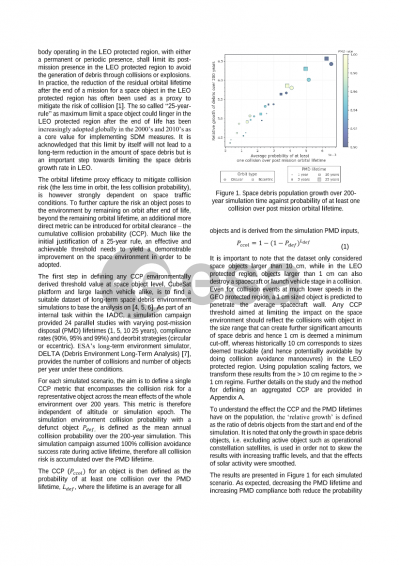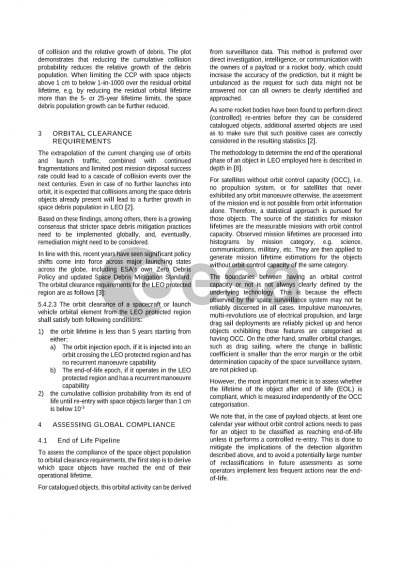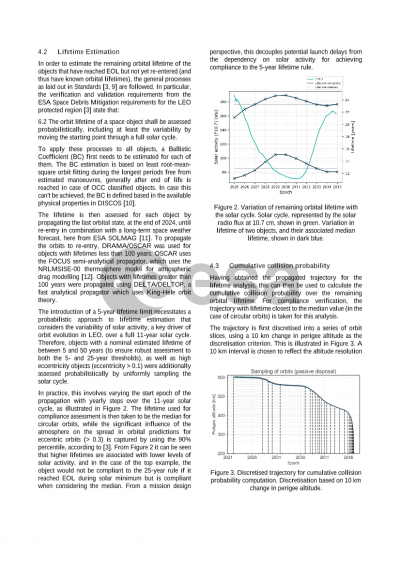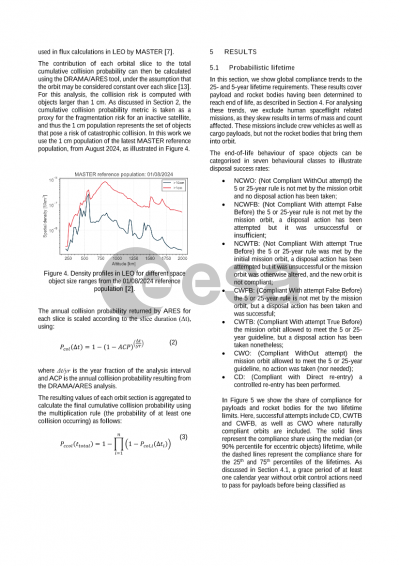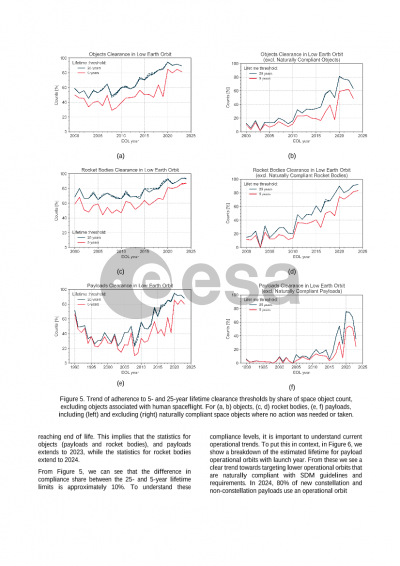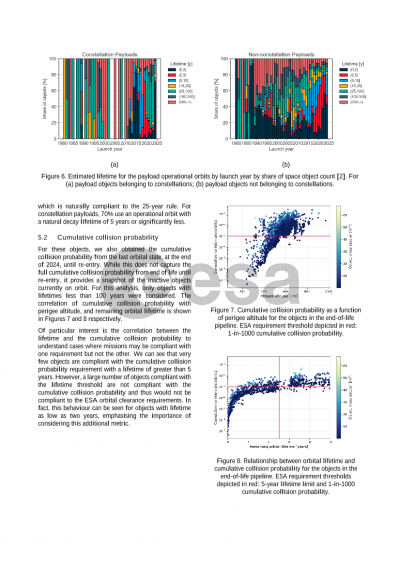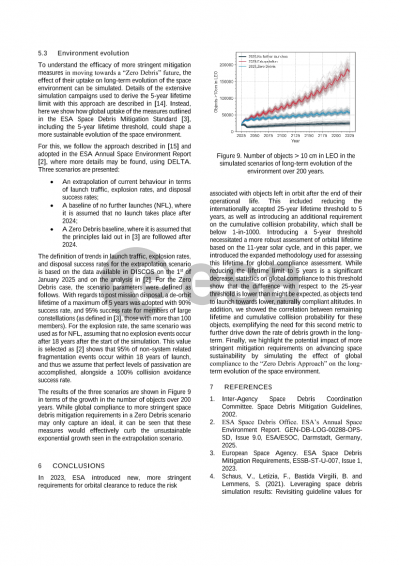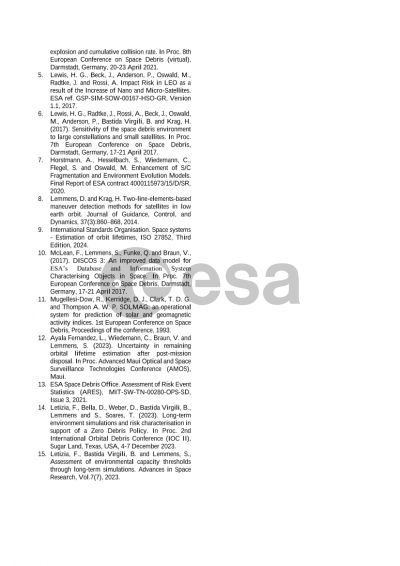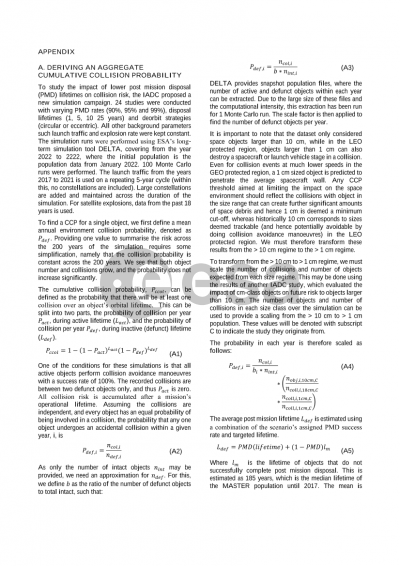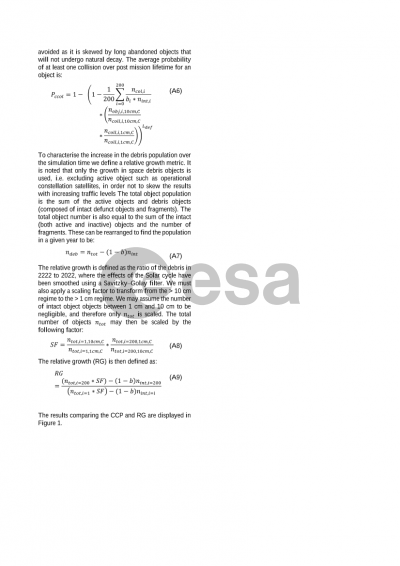Document details

Abstract
The proliferation of space debris presents a growing challenge to the sustainability of space activities, threatening both current and future missions. To address this, Space Debris Mitigation (SDM) activities employ both design and operational strategies to curb space debris generation by preventing on-orbit fragmentations and minimising collision risks.
Since 2017, the European Space Agency (ESA) has published an annual space environment report to provide a transparent overview of global space activities and adherence to internationally endorsed SDM guidelines, namely those laid out by the Inter-Agency Space Debris Coordination Committee (IADC). Despite ongoing efforts, current levels of compliance remain insufficient for maintaining a sustainable space environment in the long-term. Consequently, there is a growing trend advocating for stricter guidelines, with significant policy shifts coming into force across major launching states across the globe. As a part of this, 2023 saw the introduction of ESA's "Zero Debris Approach", including an updated SDM Policy and Standard applicable within ESA, alongside the Zero Debris Charter.
One of the core elements of the new ESA SDM Standard is the set of requirements on orbital clearance. These requirements mandate timely clearance of objects from protected orbital regions at the end of their operational lifetime to mitigate risk of interference and collision with other objects. In particular, the new Standard lowers the post-mission orbit lifetime limit from 25 years to 5 years for Low Earth Orbit (LEO) and introduces additional requirements on the cumulative collision probability.
In this paper, we present updates to ESA's annual space environment report in response to these new requirements. Firstly, we detail advancements in the methodologies and processing pipeline for lifetime estimation of objects reaching end of life. In particular, the introduction of a 5-year lifetime limit necessitates a probabilistic approach to lifetime estimation that considers the variability of solar activity, a key driver of orbit evolution in LEO, over a full 11-year solar cycle to ensure robust compliance assessment. Secondly, we introduce the computation of the cumulative collision probability for objects in the end-of-life pipeline for the first time. In this context, an assessment of the corresponding 1-in-1000 threshold is also discussed.
Finally, we present global compliance trends, showing the status of the space environment through this new lens and highlighting the potential impact of more stringent orbital clearance requirements and guidelines on advancing global space sustainability.
Preview

